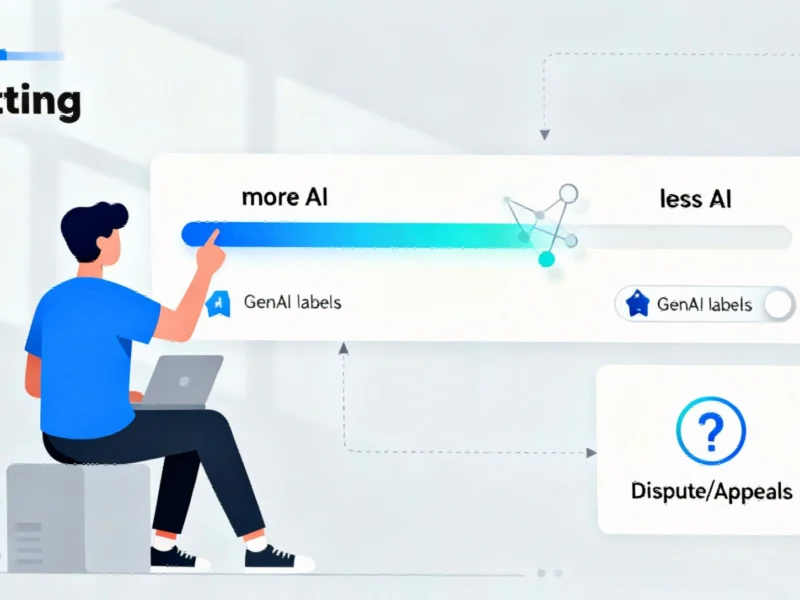In a significant move toward user-centric AI governance, Pinterest has launched groundbreaking controls that allow users to personalize how much generative AI content appears in their feeds. This initiative represents one of the most comprehensive approaches to AI transparency and user preference implementation in social platforms today, positioning Pinterest at the forefront of responsible AI integration in visual discovery platforms.
Personalized AI Content Experience
The newly introduced “GenAI controls” enable Pinterest users to fine-tune their exposure to AI-generated imagery across specific categories. Through an updated content tuner accessible via Settings under “refine your recommendations,” users can now actively decrease the volume of AI-created pins they encounter. This granular control mechanism addresses growing user concerns about AI content saturation while maintaining the platform’s signature inspirational experience.
Matt Madrigal, Pinterest’s Chief Technology Officer, emphasized the user-focused philosophy behind these changes: “Our community is at the heart of everything we do. With our new GenAI controls, we’re empowering people to personalize their Pinterest experience more than ever — striking the right balance between human creativity and AI innovation, and ensuring every feed truly reflects what inspires them most.”
Advanced AI Detection and Labeling System
Pinterest’s implementation relies on sophisticated identification technology that combines image metadata assessment with AI classification algorithms. This dual approach enables the platform to detect AI-generated content even when visual indicators aren’t immediately apparent to human viewers. The enhanced labeling system provides clearer disclosure about content origins, helping users make informed decisions about what they consume and share.
This push for clearer AI content identification mirrors broader industry trends, with technology leaders including Microsoft enhancing user experience through familiar features and Google developing new enterprise tools that incorporate similar transparency measures.
User-Friendly Control Interface
The practical implementation of these controls demonstrates Pinterest’s commitment to accessibility. Users can adjust their preferences through two primary methods:
- Category-based tuning: Users can visit Settings and navigate to “refine your recommendations” to decrease GenAI images in each supported category
- Individual content management: By clicking the three-dot menu on any Pin, users can directly indicate content they prefer not to see, which automatically updates their preference algorithms
Comprehensive Appeals System
Recognizing that automated systems can sometimes misclassify content, Pinterest has implemented a robust appeals process. This allows creators to dispute incorrect AI-generated labels, protecting authentic human-created content from being improperly categorized. This safeguard is particularly important for artists and content creators whose livelihoods depend on accurate content attribution.
The attention to creator protection reflects a broader industry awareness of workforce impacts, similar to considerations seen in major corporate restructuring announcements affecting employment landscapes.
Addressing Advertiser Concerns
Beyond user experience improvements, Pinterest’s new controls directly respond to advertiser needs for brand safety. The platform now enables brands to prevent their advertisements from appearing alongside unwanted AI-generated content, addressing a significant concern in the digital advertising ecosystem. This development comes as platforms across the industry work to balance innovation with commercial considerations.
The business implications of technological adoption remain complex across sectors, as evidenced by market responses to emerging technology resource companies and Apple’s silicon advancements driving computing evolution.
Industry-Wide Movement Toward AI Transparency
Pinterest joins other technology giants including Google, Microsoft, and Meta in advancing clearer AI content disclosures. This collective movement toward transparency reflects the industry’s recognition that as AI generation tools become more sophisticated and accessible, users need better mechanisms to distinguish between human-created and AI-generated content.
The implementation of these controls represents a significant step in establishing best practices for AI content management, potentially setting standards for how visual platforms balance technological innovation with user trust and content authenticity.
As AI continues to reshape digital experiences, Pinterest’s user-controlled approach demonstrates how platforms can empower rather than overwhelm users, creating a more intentional and personalized online environment that respects individual preferences while embracing technological progress.
Based on reporting by {‘uri’: ‘neowin.net’, ‘dataType’: ‘news’, ‘title’: ‘Neowin’, ‘description’: ‘News, Reviews & Betas which includes large community peer support’, ‘location’: {‘type’: ‘place’, ‘geoNamesId’: ‘5006059’, ‘label’: {‘eng’: ‘Plymouth, Michigan’}, ‘population’: 9132, ‘lat’: 42.37143, ‘long’: -83.47021, ‘country’: {‘type’: ‘country’, ‘geoNamesId’: ‘6252001’, ‘label’: {‘eng’: ‘United States’}, ‘population’: 310232863, ‘lat’: 39.76, ‘long’: -98.5, ‘area’: 9629091, ‘continent’: ‘Noth America’}}, ‘locationValidated’: False, ‘ranking’: {‘importanceRank’: 259357, ‘alexaGlobalRank’: 14895, ‘alexaCountryRank’: 14478}}. This article aggregates information from publicly available sources. All trademarks and copyrights belong to their respective owners.



